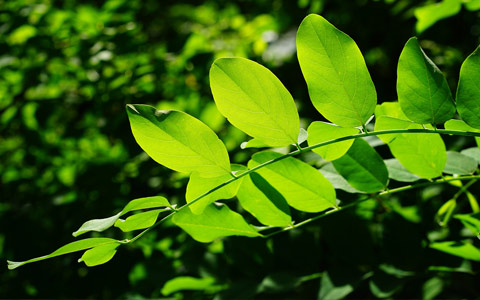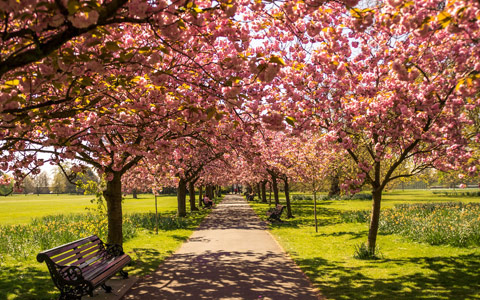
If you could make a significant contribution to the slowing of climate change and global warming, would you do it? With every tree you plant, you increase breathable air, reduce atmospheric CO2, and help the local ecosystem.
Planting a tree is the beginning of a journey with nature. The better the conditions are when planting a tree, the healthier it will be and faster it will grow.
72tree.com gathered the following hardiness zone, location, soil, watering, pruning, and care information to serve as a guide when planting a tree.
Tree Planting – Hardiness Zone
Tree species across the world have adapted to thrive in their respective environment. In the United States, the USDA has determined 11 hardiness zones by their average annual extreme low temperatures.
Before choosing a species to plant, you must first determine which hardiness zone the planting location is in. The following is the USDA’s Hardiness Zone Map.

For an interactive version of the map, visit planthardiness.ars.usda.gov/phzmweb/interactivemap.aspx
As an example, the state of Georgia spans through hardiness zones 6b through 8b, making it suitable for maples, oaks, and poplars among others. For these and other shade trees suitable to plant in Alpharetta or Roswell Ga, visit 72tree.com/5-popular-alpharetta-ga-shade-trees/
Once you have determined the hardiness zone of the planting location, it’s time to consider the planting location and select a tree species.
Tree Planting – Location
While trees are impacted largely by climate, conditions within their immediate environment are equally as important. Take the following factors into consideration when choosing which species and where to plant:
Shade Tolerance – Each tree species may react differently to the amount of sunlight it is subjected to daily. Here are the shade tolerance categories:
• Shade Tolerant
• Intermediate Shade Tolerant
• Shade Intolerant
It is important to note that shade intolerant trees like poplars, eucalyptus, aspen, and pecan trees may self-prune (drop entire branches) if subject to partial or full shade environments.

Wind Resistance – High winds and severe weather will test a tree’s foothold and its elasticity. Planting trees around the following wind-blocking features may help them survive the strongest of winds:
• Fences
• Shrubs
• Raised Garden Beds
• Hills
• Sheds
• Buildings
A tree’s resistance to severe weather is also determined by its overall health and seasonal pruning practices. Crown thinning is the perfect example of a pruning technique that allows wind to blow more freely through the crown, significantly reducing the potential for severe damage.
Understory Trees – These trees grow from 20 to 25ft tall and are shade tolerant. These trees are well suited for “plaza” settings or environments in which they are surrounded by buildings and a mostly shaded setting. In a forest, these are the trees that grow between the forest floor and the bottom of the overstory canopy.

Overstory Trees – These trees grow from 40ft and beyond. Overstory trees are shade intolerant and require wide open space to reach their maximum height potential. In a forest, these are the trees that make up the uppermost part of the canopy.

Root Growth – In nearly all tree species, some roots grow deep into the ground to stabilize the tree, and the vast majority of roots spread out around the tree within the top 2 to 3ft of soil in search of water and nutrients.
It is essential that your planting location be far enough away from sidewalks, pathways, driveways, and building foundations to avoid buckling and structural damage.
For more information on how tree roots affect surrounding structures, read 72tree.com/tree-roots-buckling-concrete-driveway/
Tree Planting – Soil
Since soil contains the organic matter and water a tree needs, it is obvious that the growth and health of your new tree depend heavily on the soil it is planted in. The following guidelines will help you prepare the soil for planting:
Soil Type – There are four basic types of soil:
• Sand – Sandy soil has difficulty retaining water and roots are often unable to establish themselves firmly.
• Silt – Silt is a granular quartz or feldspar material sized between sand and clay.
• Clay – Clay soil is the denser of the soil types, has poor drainage, and compacts very easily.
• Loam – Loam is a combination of the other three soil types and is widely considered to be the best soil for planting.
The majority of tree species flourish in well-drained silt or loam soil, while few are adapted to sand or clay soils.

Soil pH Level – Neutral soils have a pH level of 6.5 to 7.5, acidic soils have a pH level below 6.5, and basic soils have a pH level higher than 7.5.
Depending on the species of your tree, it may grow better in acidic soil like pine trees, while most hardwoods do better in slightly acidic to neutral soil.
The pH level of the soil can be lowered by mixing in sulfur, and most fertilizers, while lime or organic mulch, can be added to raise the pH level.
When planting a tree, the soil within a 4 to 5ft radius around the trunk should have its pH adjusted to meet the needs of the tree species, and the soil mixed to a loam consistency to offer the best root development environment.
Tree Planting – Watering
For the first few years of growth, newly planted trees (in well-drained soil) require a deep watering every two weeks or so. Deep watering is when you allow a slow but steady stream of water to penetrate 10in or more into the soil.

The benefit of deep watering is that roots will grow deeper into the soil, discouraging surface roots. Surface roots are easily damaged, allowing for either infection or infestation which weaken the tree’s health and could lead to its early death.
During rainy seasons, deep waterings should be spread further apart, every 3 to 4 weeks, and during dry seasons or times of drought, weekly deep waterings may be necessary.
Tree Care After Planting
After a full year of growth, it’s time to start applying routine tree care practices. In late fall, you can prune your tree to encourage spring growth, maintain its shape, or remove diseased or damaged limbs. Learn the various tree pruning techniques and their purpose so you avoid making an irreparable mistake.
Fertilizing should only occur between the beginning of spring and the beginning of summer. Fertilizing in mid or late summer will encourage new growth which will not have sufficient time to harden and will likely die in the winter months.

Set up an annual inspection with an ISA certified arborist. An arborist can give you valuable insight as to the influence your landscape has on your tree and vice-versa. He or she can also help in the early detection of disease, infestations, and other potential threats to your tree.
Tree Planting for a Better World
You can help slow the effects of climate change and global warming by planting a tree. With a world population of nearly 8 billion people, research shows that the 3 trillion trees currently occupying the planet with us just won’t be enough for human life to flourish in the coming centuries.
In this article, you discovered the USDA’s Hardiness Zone Map, tree planting guidelines for location selection, soil composition, watering frequencies, pruning, and care.
By neglecting the world’s diminishing tree population, we as a people are potentially condemning future generations to an inhospitable planet in which little – if any – life will be able to survive. When you plant and care for a tree, you are truly helping to save the planet and the future of mankind.
Sources:
http://www.americaslongleaf.org/media/2516/soil-ph-tree-suitability-in-the-south-_sref_.pdf
https://extension.psu.edu/forest-landowners-guide-to-tree-planting-success
https://csfs.colostate.edu/colorado-trees/selecting-planting-and-caring-for-trees/planting-tips/
https://forestry.usu.edu/trees-cities-towns/urban-forestry/landscape-trees-climate
https://www.extension.iastate.edu/forestry/publications/pdf_files/ctspsoilstrees.pdf